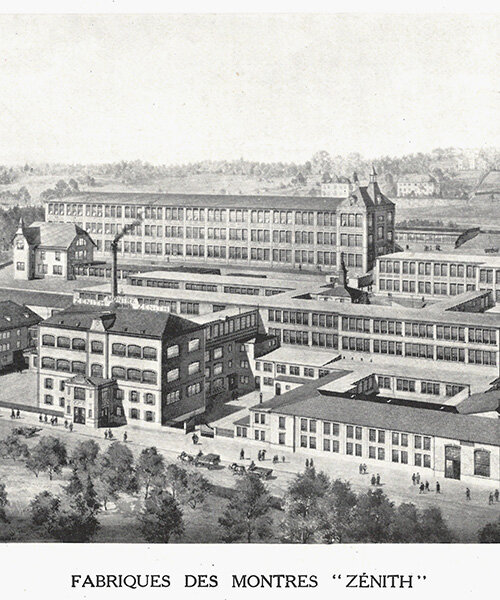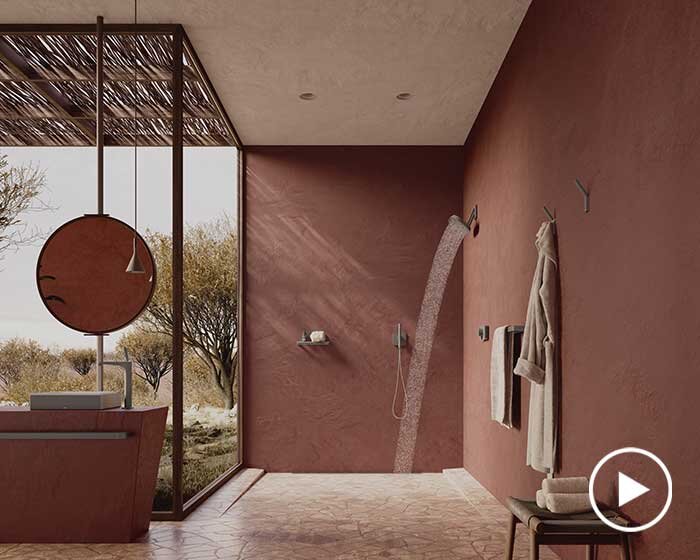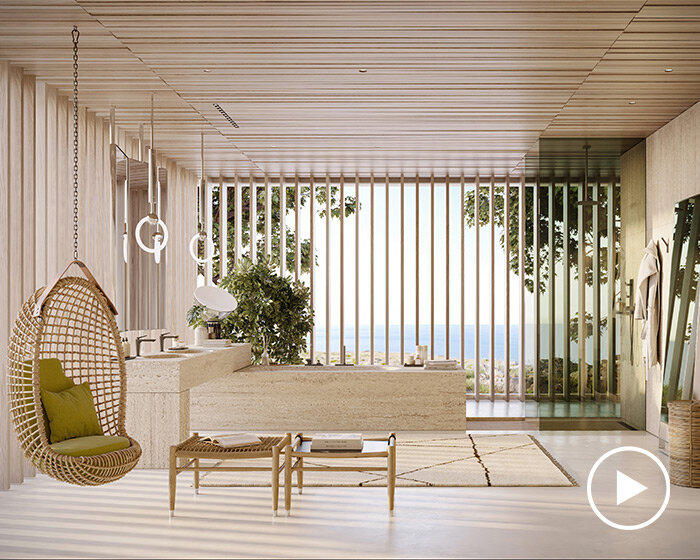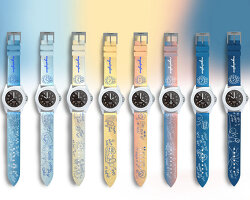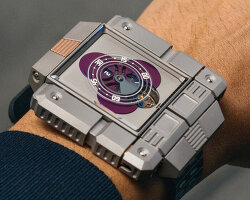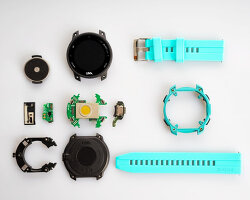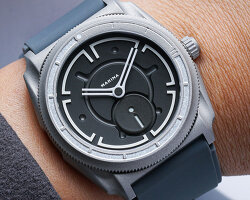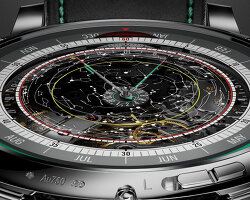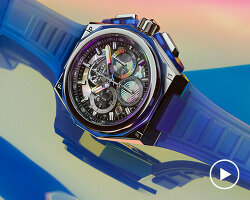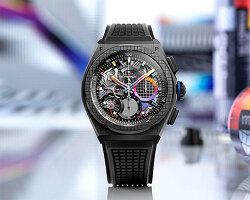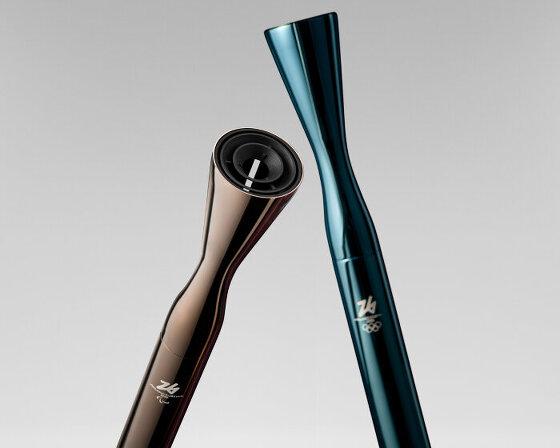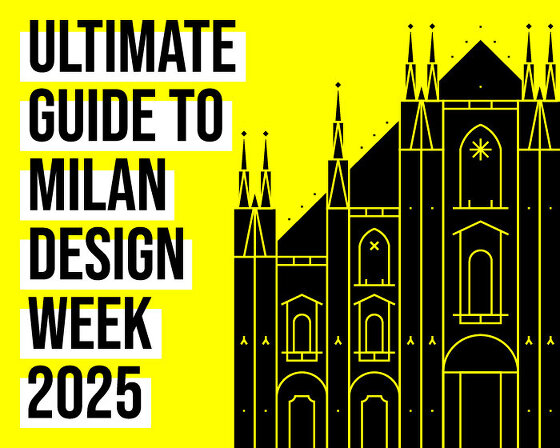Famed for its emblematic models – whether rare vintages or contemporary collaborative editions – as much as for its key movements, Zenith’s timepieces are icons that transcend the industry. The brand acts at the forefront of Swiss watchmaking, as it shapes the future by daring to challenge new heights in technical performance as well as aesthetics.
Laurence Bodenmann, Head of Heritage, and Sebastien Gobert, Head of Design, explore the hidden ingredients behind Zenith’s creativity with designboom.
![]()
Zenith enameled ad from the beginning of the 20th century
Image © Zenith Heritage
innovation since 1865
Zenith’s story begins in 1865 by Swiss visionary Georges Favre–Jacot who strove for the creation of the most perfect watch ever. This mission still motivates the brand to this day, as the ‘label’ master of chronographs aspires them to push possibilities further and further.
‘Georges Favre-Jacot’s vision was to achieve perfection by implementing new means of production (verticalization) at the heart of the Swiss traditional watchmaking industry. Such perfection was meant from the start both on a technical level – in terms of performance and precision, and on an aesthetical level – rethinking what would make such watches desirable in the eyes of the modern customer. Georges Favre-Jacot Zenith’s design has always been operating on both levels,’ begins Laurence Bodenmann, Head of Heritage, at Zenith’s home in Le Locle.
![]()
Georges Favre-Jacot, founder of Zenith
Image © Zenith Heritage
el primero: an everlasting icon
Zenith’s El Primero encapsulates both aspects of this research of perfection. The 1969 world’s first automatic, integrated high-frequency chronograph calibre, whose history remains uninterrupted thanks to the saving gesture of Zenith’s watchmaker Charles Vermot, combines from the start a performing movement – which led to its resurgence, despite the quartz crisis – and original case and dial designs which turned them into icons in the history of watchmaking.
![]()
The El Primero ‘TV-Screen’ from 1973, ‘mak[ing] accurate time a thing of beauty’
Image © Zenith Heritage
As a new millennium approached, new applications and possibilities for El Primero arose. An open heart watch revealed the beating heart of the calibre to the wearers for the first time. Zenith then defied gravity with the patented Zero G mechanism that suspended the regulating organ in a gyroscopic cage in the timepiece. The next big milestone debuted DEFY El Primero 21, which amazed with a beat rate of 50Hz for an accurate 1/100th of a second chronograph function. The timeless innovation continues to challenge the designs of Zenith to this day.
‘At Zenith, we believe it is important that the heritage and design teams are in the same department,’ clarifies Bodenmann. ‘Heritage is part of the product. We work together to ensure our new products are recognizable as Zenith, while being innovative. Heritage brings the logic behind certain past design choices, why decisions were taken then, to help today’s designers in opening new realms of possibilities as they create the future.’
![]()
Zenith DEFY El Primero 21 launched in 2018
Image © Zenith
paving the way for aesthetic innovation
With a history of industry-defining innovations, it would be easy for Zenith to let its performance lead its future – but being innovative in terms of aesthetics has always been equally as important. The turn of 20th century was marked by the brand’s series of creative partnerships to establish new aesthetics into the watchmaking world, enhancing the introduction of the new means of production Zenith had paved the way for within the heart of Switzerland’s otherwise traditional watchmaking industry. Zenith’s founder Georges Favre-Jacot this went looking for unique collaborations with some of the most prominent Art Nouveau masters, like Alphons Mucha and René Lalique, which had found new ways of shaping industrial materials and objects, to call for a new era. The results made Zenith’s already reputable precision watches the choice for global institutes as well as influencers, like socialites, politicians and more. One such collaboration saw a young promising and adventurous architect design Jacot’s home in Le Locle. He went on to be internationally known as Le Corbusier.
Sketch of Le Corbusier’s design for Georges Favre–Jacot’s home in Le Locle. Image © Fondation Le Corbusier, Paris
‘Georges Favre-Jacot was himself one of the founders of the Oeuvre, a Swiss movement which called for the renewal of aesthetics meant for the industry. In the early 20th century, he appealed to avant-garde artists such as Mucha and Lalique, who were pioneers of Art Nouveau. Such collaborations went beyond product level; they influenced all aspects of the brand, from boutiques to advertising and brochures,’ Bodenmann continues to add. ‘With an internal bureau of design that ensured very early on the coherence of it all on the brand’s level.’
![]()
Zenith Pocketwatch with Art nouveau caseback signed by René Lalique
Image © Zenith Heritage
Today, the latest brand’s innovations, such as the DEFY El Primero 21, have been re-interpreted as new expressions of time by contemporary creatives. The DEFY 21 Felipe Pantone, debuting at Watches & Wonders 2021, exemplifies this as the Spanish-based Argentine artist explores the high-frequency in colors on a timepiece. The unique pieces became a very limited example of wearable kinetic art – and what the future could hold for the watch industry as a whole.
‘Our collaborations with contemporary artists, such as Felipe Pantone, continue what Georges Favre–Jacot started over 100 years ago. It helps us innovate. The artists, who typically work on large-scaled projects, come to the manufacture they force us to translate their artistic vision into 30 or 40 millimeters of space instead. This conveys us to push the limits of what designers, engineers and suppliers are used to do and think was possible,’ explains Sebastien Gobert, Head of Design at Zenith.
![]()
Zenith X Panton DEFY El Primero 21 ltd edition from 2021
Image © Zenith
‘These collaborations start like love stories. The artist needs to be interested in watchmaking and Zenith, and we need to like their work too. We always look for partnerships with those who have different approaches to us,’ clarifies Sebastien. ‘This means we create concepts, new solutions and products that explore new possibilities. Just like concept cars, which are meant to show what is possible, and will translate into new possibilities within the core production.’
Creative collaborations have a very deep history within Zenith. The brand’s movements are globally renowned to be some of the best in the history of watchmaking. But what moves a product to an icon for Zenith is this desire to continuously push the limits of possibilities. Technical and aesthetic innovation fuse performance and stylish outreach. The need to rethink is provoked through partnerships; they propose concepts that challenge Swiss watchmaking. It is time to see what Zenith creates next.
Zenith Manufacture today, pictured with a temporary façade designed by Felipe Pantone. Image © Zenith
brand info:
brand: Zenith
founder: Georges Favre-Jacot
founding year: 1865
home: Le Locle, Switzerland
